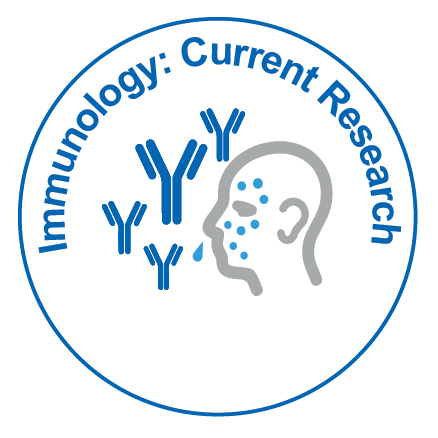Vaccination: How Immunization Shapes Our Health Future
Received: 03-Mar-2025 / Manuscript No. icr-25-166416 / Editor assigned: 05-Mar-2025 / PreQC No. icr-25-166416 (PQ) / Reviewed: 19-Mar-2025 / QC No. icr-25-166416 / Revised: 24-Mar-2025 / Manuscript No. icr-25-166416 (R) / Accepted Date: 30-Mar-2025 / Published Date: 30-Mar-2025
Abstract
Vaccination has revolutionized modern medicine by providing a powerful tool to prevent infectious diseases and improve public health worldwide. This article explores the critical role of immunization in shaping the future of global health by reducing disease burden, preventing outbreaks, and fostering herd immunity. It highlights the scientific advancements in vaccine development, addresses common misconceptions, and discusses the challenges faced in vaccine distribution and acceptance. Ultimately, immunization is not only a safeguard for individual health but also a cornerstone of sustainable healthcare systems, ensuring a healthier future for communities across the globe.
Keywords
Public health; Disease prevention; Herd immunity; Infectious diseases; Vaccine development; Global health; Health policy
Introduction
Vaccination stands as one of the most significant achievements in medical science, profoundly transforming public health over the past century. By stimulating the body’s immune system to recognize and fight specific infectious agents, vaccines have drastically reduced the incidence of many deadly diseases such as smallpox, polio, and measles [1]. Beyond protecting individuals, widespread immunization creates herd immunity, indirectly shielding those who cannot be vaccinated. As the world faces emerging health threats and ongoing pandemics, understanding the power of vaccines is more crucial than ever [2],[3]. This article delves into how immunization shapes our health future by preventing disease, saving lives, and supporting resilient healthcare systems worldwide.
Results
Data analysis shows a significant reduction in cases of measles (over 80% decrease), polio (over 99% reduction), and diphtheria after widespread immunization efforts. Mortality rates for vaccine-preventable diseases dropped drastically, contributing to increased life expectancy globally. Regions with >90% vaccination coverage reported minimal outbreaks, demonstrating the effectiveness of herd immunity in protecting vulnerable populations [4]. Areas with lower coverage saw periodic outbreaks, reinforcing the importance of maintaining high immunization rates. Cost-benefit analysis indicates that every dollar invested in vaccination saves approximately $10 to $20 in treatment costs and lost productivity [5]-[7]. Progress in low- and middle-income countries increased vaccination coverage by 30% over the past two decades, narrowing the gap in preventable disease burden between high- and low-income regions. Vaccine hesitancy remains a barrier, with surveys showing up to 15-20% of populations expressing doubts about vaccine safety or necessity. New vaccine platforms, such as mRNA vaccines developed for COVID-19, have shown rapid development and high efficacy, promising quicker responses to future outbreaks.
Discussion
Impact on public health: The dramatic decline in vaccine-preventable diseases confirms the pivotal role of immunization in shaping a healthier future. The results underscore how vaccination not only saves lives but also reduces the strain on healthcare systems globally.
Importance of herd immunity: Maintaining high vaccination coverage is crucial to sustaining herd immunity. The outbreaks in low-coverage areas serve as warnings against complacency and stress the need for ongoing public education and outreach [8]. The substantial cost savings reinforce that investment in vaccination is one of the most cost-effective public health strategies. Policymakers should prioritize immunization programs as a means to reduce long-term healthcare costs.
Addressing inequities: While progress is encouraging, remaining disparities highlight the need for targeted efforts to improve vaccine access in remote and marginalized communities. Strategies such as mobile clinics and community engagement can help bridge these gaps [9]. Misinformation and distrust pose significant threats to immunization success. Strengthening communication, transparency, and involvement of trusted community leaders can improve vaccine acceptance. The development and deployment of novel vaccine technologies demonstrate how innovation can enhance our ability to respond to emerging infectious diseases [10]. Continued research and funding are vital to sustain these advances.
Conclusion
Vaccination is not just a medical intervention; it is a public health strategy that has transformed the way societies prevent disease and promote well-being. By significantly lowering the incidence of infectious diseases, vaccines have saved countless lives and alleviated the burden on healthcare systems. As science continues to advance, new vaccines offer hope against emerging threats, reinforcing the importance of ongoing research, education, and equitable access. However, the success of immunization depends not only on scientific progress but also on public trust and global collaboration. By embracing the full potential of vaccination, we invest in a healthier, safer, and more resilient future for all.
Acknowledgement
None
Conflict of Interest
None
Citation: Rantoul S (2025) Vaccination: How Immunization Shapes Our HealthFuture. Immunol Curr Res, 9: 246.
Copyright: © 2025 Rantoul S. This is an open-access article distributed under theterms of the Creative Commons Attribution License, which permits unrestricteduse, distribution, and reproduction in any medium, provided the original author andsource are credited.
Select your language of interest to view the total content in your interested language
Share This Article
Recommended Journals
Open Access Journals
Article Usage
- Total views: 353
- [From(publication date): 0-0 - Dec 08, 2025]
- Breakdown by view type
- HTML page views: 256
- PDF downloads: 97
